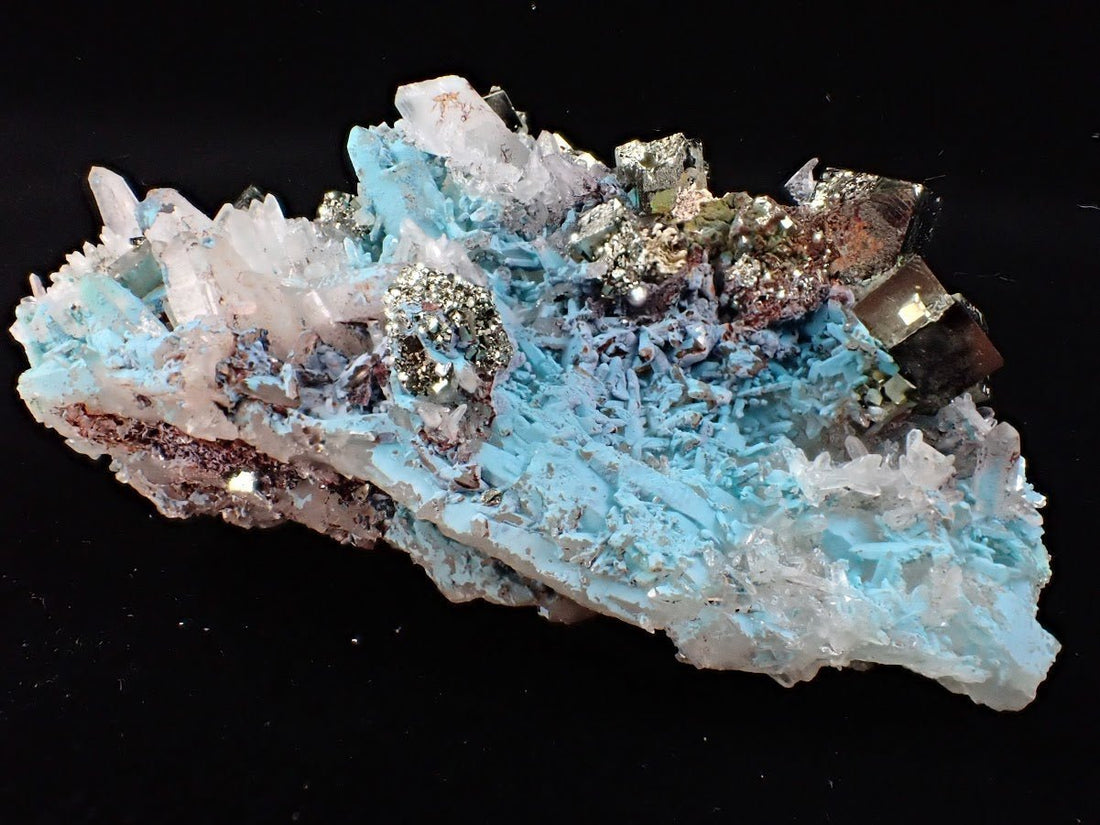
What Makes a Mineral Specimen Collector Grade?
Share
Not all crystals are created equal, and in the world of serious mineral collecting, the distinction between decorative and collector-grade is everything. If you’ve ever wondered what makes a specimen truly collectible (and why some cost thousands), this guide is for you.
What Does “Collector Grade” Actually Mean?
“Collector grade” refers to mineral specimens that meet high standards for natural beauty, integrity, and geological significance. These are the pieces sought by serious collectors, museum curators, and mineral enthusiasts who want more than just pretty decor.
Collector grade doesn’t mean perfect — it means exceptional within natural limits.
1. Crystal Integrity and Natural Formation
Top-tier specimens show strong crystal integrity. That means:
- Sharp, well-defined faces and edges
- Fully formed terminations, not broken or chipped tips
- Natural growth patterns (like zoning or phantoms)
Collector pieces retain their natural crystal habit without being overly trimmed or reconstructed.
2. Aesthetic Composition
Visual appeal matters. Symmetry, balance, and color contrast can dramatically increase value. Some things that elevate a specimen’s presentation:
- Vivid, saturated color (especially rare hues)
- Internal clarity or inclusions that enhance the story
- Interesting geometry or growth habits
- High-quality matrix that complements the crystals
Remember: Collector grade isn’t just about being “clean,” it’s about being captivating.
3. Locality and Provenance
Where a crystal comes from can be just as important as what it looks like. Collector-grade pieces often come from:
- Historic or closed mines (e.g., XHL, Yaogangxian, Rogerley)
- Famous mineral regions (e.g., Inner Mongolia, Pakistan, Namibia)
- Documented origin
Provenance adds context, rarity, and long-term value to the piece especially for resale or exhibition.
4. Rarity and Geological Significance
Collector-grade minerals often exhibit features that are rare in nature or specific to a small number of localities, such as:
- Fluorite cubes with phantoms and window faces
- Zoning patterns or terminations unique to one pocket
- Rare combinations (e.g., stibnite on blue aragonite)
These geological anomalies are prized precisely because they don’t occur everywhere.
5. Condition and Treatment Disclosure
A true collector-grade crystal is:
- Fully natural (no dye, no vapor coating)
- If repaired, it’s done minimally and disclosed honestly
- Not overly polished or altered
Small repairs or base trims can be acceptable especially for large or delicate specimens but only when they’re documented clearly.
Legacy’s Standard: Collector Grade, Always Natural
At Legacy Crystals and Minerals, we specialize in collector-grade crystals that meet the highest natural standards. We hand-select each piece for:
- Locality and provenance
- Crystal integrity and formation
- Aesthetic appeal and matrix composition
Every specimen we offer is 100% natural, untreated, and verified for collectors who value truth in their minerals.
Final Thoughts: Why It Matters
Understanding what makes a crystal “collector grade” helps you buy better, appreciate more, and build a collection that holds beauty and value over time. Whether you're curating for display, investment, or passion, choose specimens that are both exceptional and authentic.
Collect with intention. Invest in the Earth’s finest.



